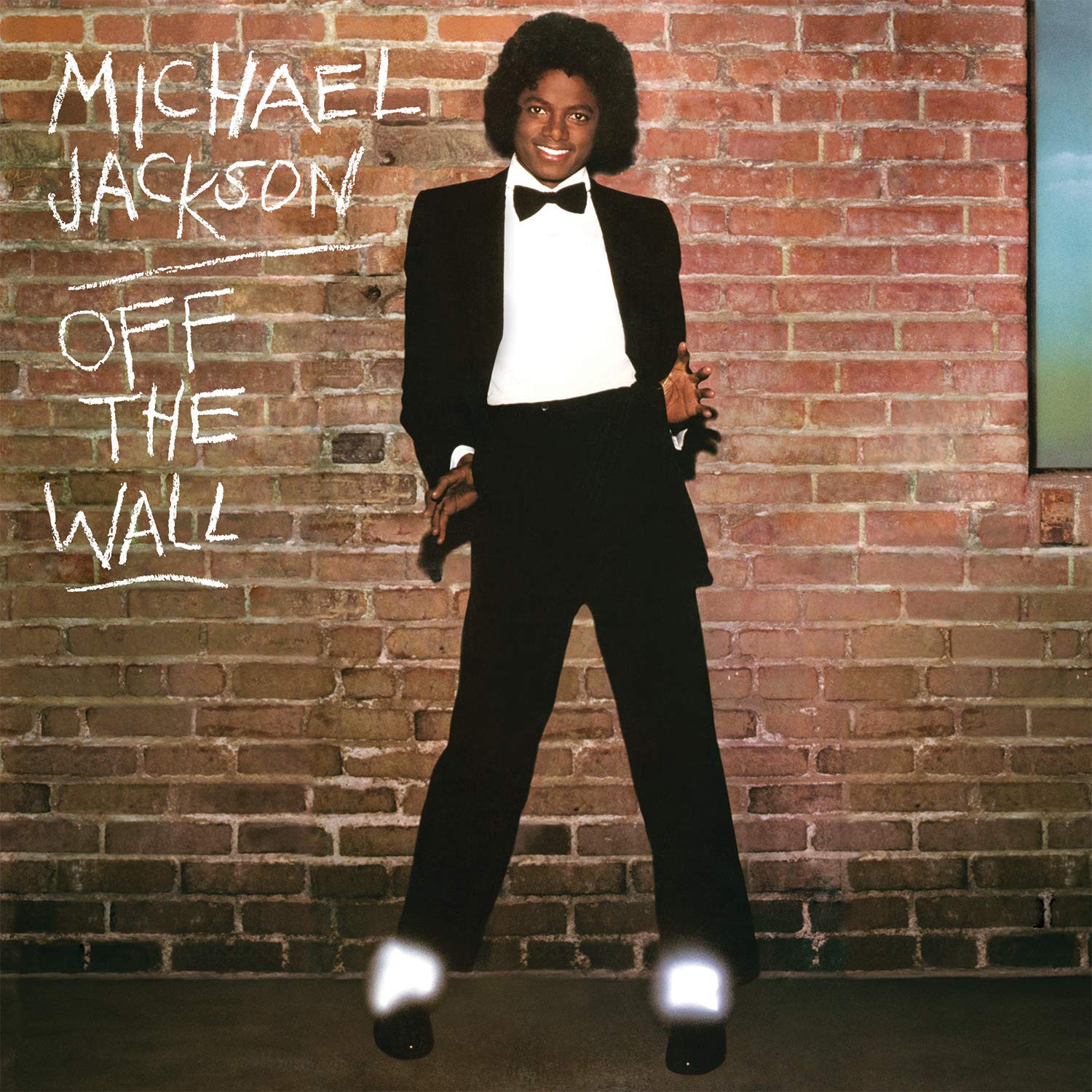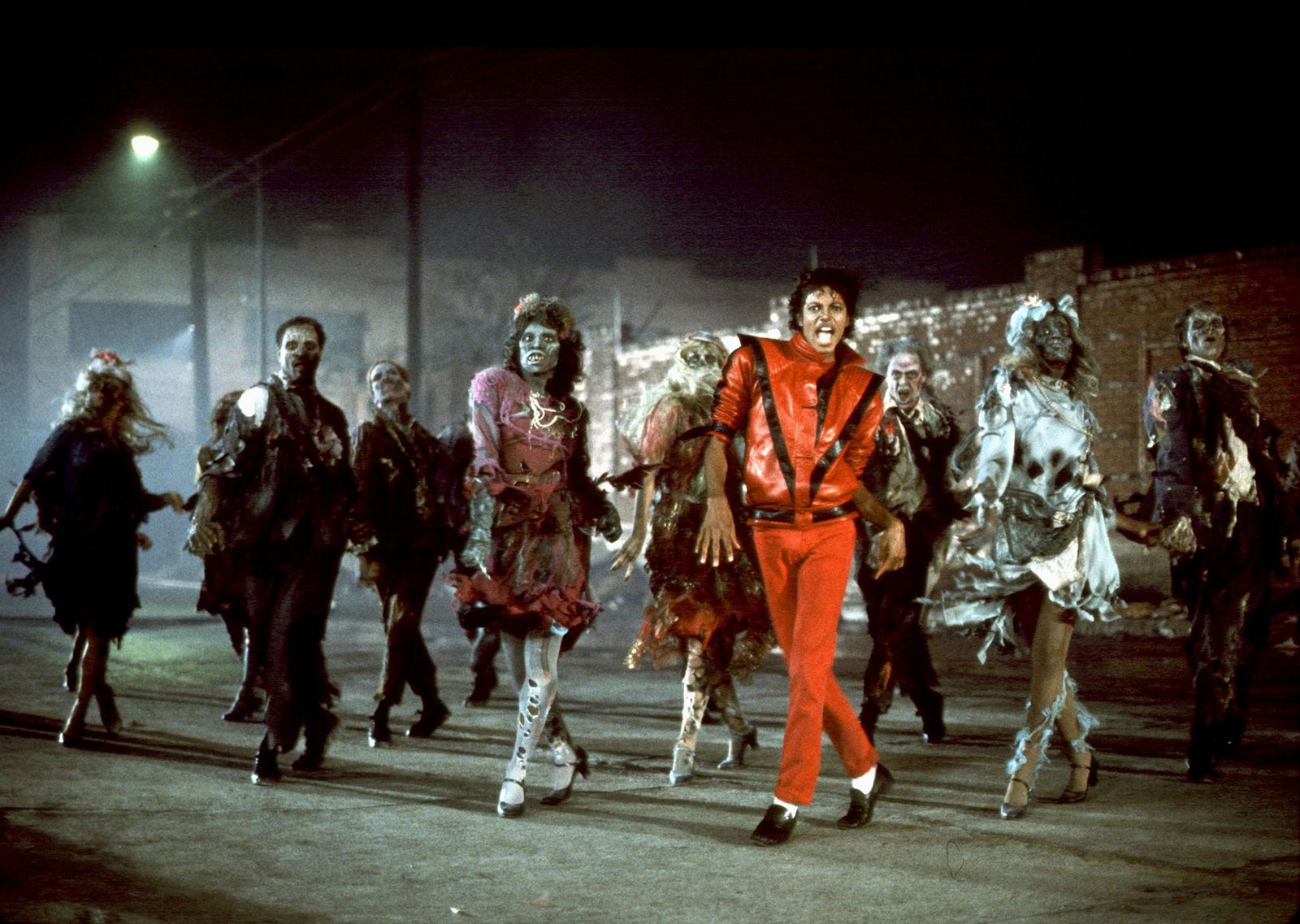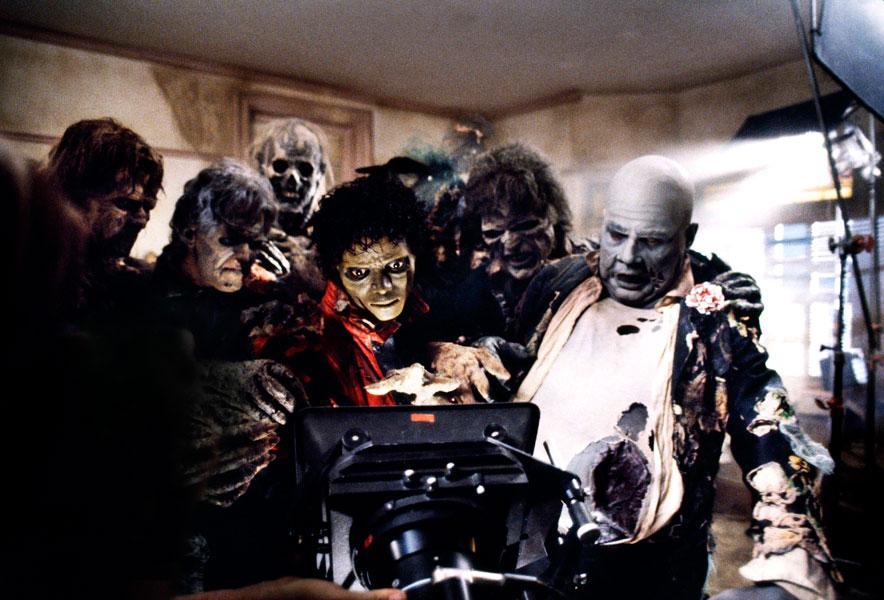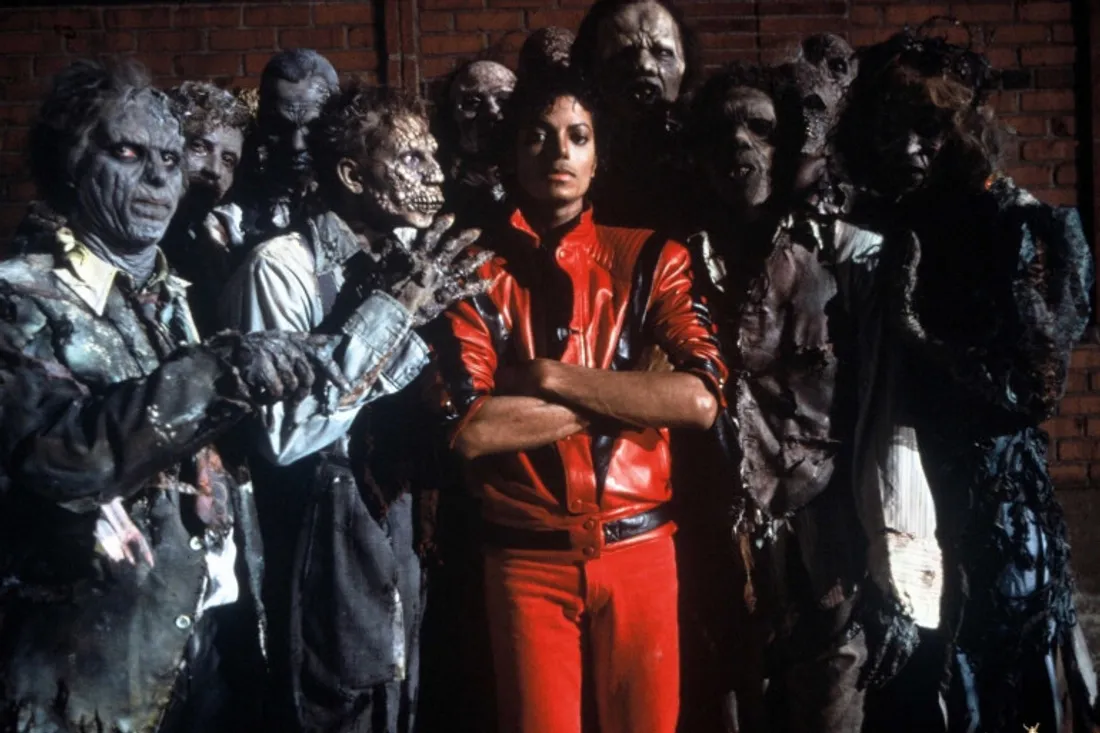« Thriller » by Michael Jackson is not just a hit of its time, but a revolutionary work that redefined global pop culture and broadened the horizons of Black music. Exploring the impact of this iconic piece on the music industry, visual culture, and the perception of African-American art.
When Michael Jackson released Thriller in 1982, the music industry and the public expected just another hit. But Thriller exceeded all expectations, marking the beginning of a global cultural revolution. Beyond its commercial success, this piece transcended artistic and social boundaries, opening a unique path for Black music in the entertainment industry.
A unique vision

Already a major figure in pop music with the album Off the Wall, Michael Jackson wanted to go further, exploring new sonic and visual territories. His producer, Quincy Jones—a pioneering African-American in music production—took up the challenge, collaborating with British lyricist Rod Temperton to craft a song that seemed simple at first glance but held revolutionary potential for the global pop scene. Temperton drew inspiration from horror films, creating a piece where music and visuals seamlessly combined.
The importance of visual imagination
What truly set Thriller apart was its music video, directed by John Landis. Released in 1983, the Thriller video pushed the boundaries of music videos of the time. Jackson and Landis transformed the video into a cinematic mini-epic, lasting thirteen minutes and filled with zombies, choreographed scenes, and special effects worthy of Hollywood horror films.
With Thriller, Jackson established the power of the music video as an artistic expression tool for Black music, but also as an independent and creative medium. The clip’s production cost half a million dollars—an unprecedented amount for a format still seen as secondary at the time. However, Thriller’s success proved that audiences were ready to embrace a fusion of music and cinema, paving the way for sophisticated videos by other Black artists like Beyoncé, Kendrick Lamar, and Childish Gambino.
A global influence

With Thriller‘s iconic choreography, Jackson not only set a new visual style but redefined how dance could integrate with pop music. Dance, a core component of African-American culture, was here used to structure a complete and immersive narrative. Jackson’s movements became a signature, imitated worldwide. Memorable scenes, like the famous “Moonwalk,” introduced shortly after Thriller‘s release, captivated a global audience, and artists from all backgrounds began incorporating complex choreography into their performances.
Thriller‘s success demonstrated that dance was not merely a secondary element of music, but a universal language transcending cultural and racial boundaries. The track quickly permeated global popular culture, influencing dance movements and inspiring generations of choreographers and dancers.
Thriller and the revolution in Black music

Thriller‘s impact on Black music extended beyond its performances. In the 1980s, Black artists were often marginalized in major music broadcasting channels like MTV. Thriller forced an undeniable Black presence onto these platforms, helping integrate African-American artists into mainstream networks. MTV, initially reluctant to air the video, capitulated in the face of its resounding success and began including more Black artists in its programming.
Thriller’s success turned Jackson into a cultural icon, elevating Black music to universal status. Tracks like Beat It and Billie Jean, also from the same album, found global success, contributing to a reevaluation of Black music not only in the U.S. but also in Europe, Asia, and Latin America.
The cultural reach of thriller

The Thriller phenomenon went beyond the music industry. Its influence was felt in cinema, fashion, and even the political engagement of certain artists. Jackson became a figure of global Black identity, and his work reminded young African-Americans that art could be a powerful means of expression and self-affirmation.
With the participation of Vincent Price for the video’s spooky narration, Jackson merged genres, drawing on funk, disco, and horror film sounds. This integration of diverse cultural elements enriched global Black culture, cementing Thriller as a universal legacy. Celebrating and revisiting classic monster movies, Jackson attracted a diverse audience, making Thriller a meeting point between African-American and global cultures.
An everlasting and evolving legacy

Decades after its release, Thriller continues to dominate streaming platforms every Halloween, remaining an essential part of global music culture. This track and its video embody the evolution of Black music within global pop culture and serve as a reference point for contemporary Black artists wishing to express their cultural identity while reaching a global audience.
Thriller broke representation barriers, popularized urban dance, and redefined how Black artists could position themselves in a globalized space. In the end, Michael Jackson paved the way for generations of Afro-descendant artists who see in Thriller a model of ambition and artistic excellence.
Summary
References
- George, Nelson. Michael Jackson: The Ultimate Collection. Sony BMG, 2004.
- Grant, Adrian. Michael Jackson: The Visual Documentary. Omnibus Press, 2009.
- Jones, Jel. Michael Jackson, the King of Pop: The Big Picture – The Music! The Man! The Legend!. Amber Books Publishing, 2005.
- Hebblethwaite, Phil. How Michael Jackson’s Thriller Changed Music Videos Forever. The Guardian, 2013.
- Pareles, Jon. How Good Is Jackson’s ‘Bad’?. The New York Times, 1987.
